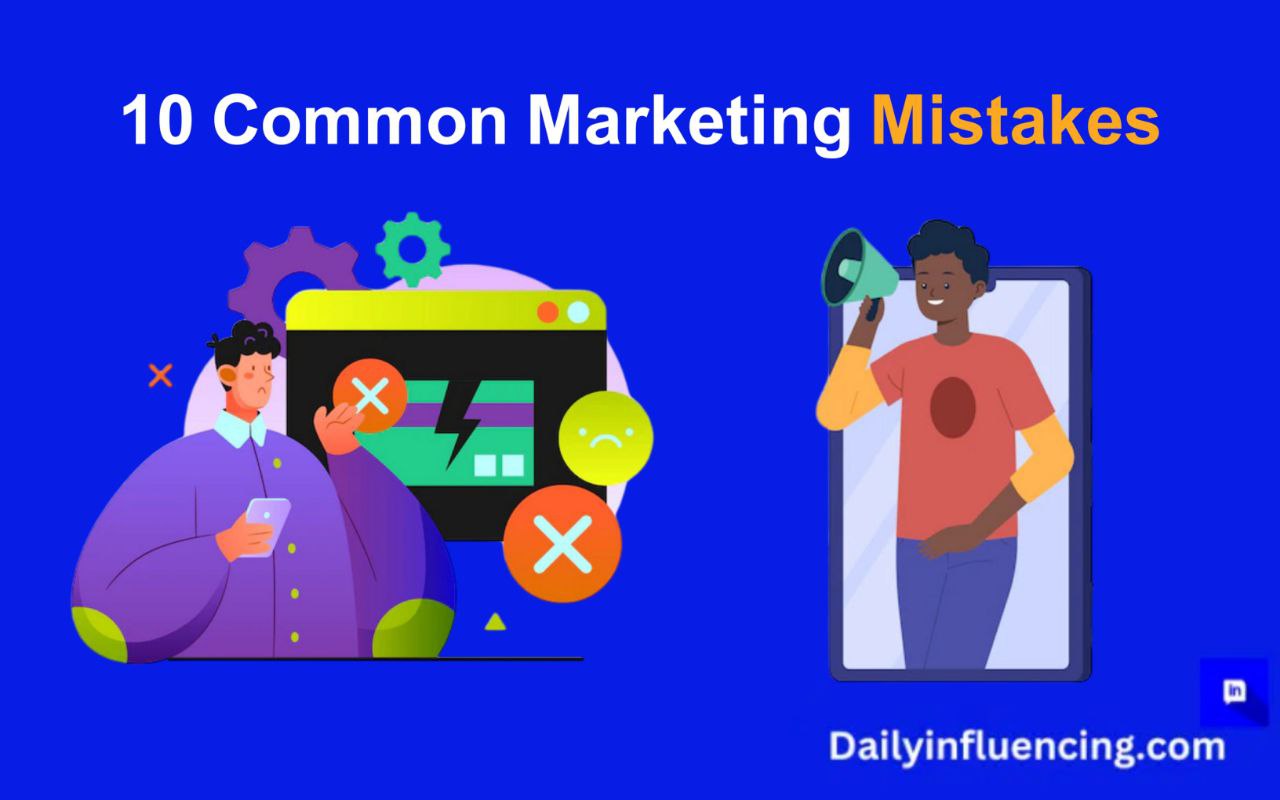
We all admire those iconic marketing campaigns that seem to effortlessly capture attention, resonate with audiences, and drive massive results.
But, despite all the planning, creativity, and resources invested, many campaigns still fall flat, leaving businesses to wonder where they went wrong.
Failure often stems from overlooked details, unrealistic expectations, or failing to understand the ever-changing dynamics of the market.
Reasons marketing campaigns fail can range from poor audience targeting to inconsistent messaging, and even a lack of measurable goals.
Campaigns that fail result in lost revenue, erode trust, damage brand reputation, and set back future efforts. The stakes couldn’t be higher.
So, why do these failures happen? And more importantly, how can they be avoided?
In this article, we’ll dive into the reasons marketing campaigns fail, dissecting the common pitfalls and providing actionable insights to help your business succeed where others fall short.
Why Do Marketing Campaigns Fail?
Marketing campaigns fail for various reasons, ranging from poor research to inadequate execution. By understanding the key factors that contribute to failure, you can craft campaigns that resonate with your audience and deliver measurable results.
Let’s explore the most common reasons marketing campaigns fail.
1. Lack of Clear Objectives
One of the biggest reasons marketing campaigns fail is the absence of clear and measurable objectives. When businesses don’t define what they aim to achieve, campaigns become scattered and lack focus.
For example, setting a vague goal like “increase brand awareness” without specifying metrics like website traffic or social media engagement leads to confusion and suboptimal results.
Instead of aiming to “generate leads,” a better goal might be “to generate 500 qualified leads within three months.”
2. Poor Understanding of the Target Audience
Another common reason marketing campaigns fail is a disconnect between the campaign and its intended audience. Without thorough market research, businesses risk creating messages that fail to resonate. For example, a luxury brand might misfire by targeting a price-sensitive audience, resulting in low engagement and wasted budget.

Understanding your audience involves more than just demographics—it requires insights into their behaviors, pain points, and preferences. Tools like surveys, analytics platforms, and customer feedback can help refine your targeting efforts.
3. Ineffective Messaging and Creative Execution
Even with a great product, ineffective messaging can derail a campaign. One reason marketing campaigns fail is when their messaging doesn’t clearly convey the value proposition or align with the brand’s voice.
Poorly designed visuals or copy that fails to engage the audience can also result in low conversion rates.
For example, Kendall Jenner Pepsi ad was criticized for being tone-deaf and failing to address the social issues it attempted to leverage. This highlights the importance of aligning creative execution with the campaign’s objectives and audience sensitivities.
4. Insufficient Budget Allocation
Budget constraints or mismanagement can be major reasons marketing campaigns fail. A campaign might have strong messaging and creativity, but without sufficient funding to reach the intended audience, its impact will be limited.
On the other hand, overspending on underperforming channels can lead to wasted resources.

It’s crucial to align your budget with your goals. For instance, if your campaign focuses on lead generation, allocate more resources to high-performing channels like Google Ads or social media ads rather than spreading the budget thinly across less effective platforms.
5. Failure to Track and Measure Performance
A surprising number of campaigns fail because businesses neglect performance tracking. Without monitoring metrics like click-through rates, conversions, or ROI, it’s impossible to determine whether the campaign is working or identify areas for improvement.
Reliance on vanity metrics, such as likes or impressions, without focusing on actionable data like sales or customer acquisition costs. Regular performance reviews and tools like Google Analytics can help ensure your campaign stays on track.
6. Ignoring Market Trends
Marketing campaigns that fail to adapt to changing trends risk irrelevance. The digital landscape evolves rapidly, and consumer preferences shift just as quickly. Campaigns that don’t stay updated with trends, such as video marketing or interactive content, can appear outdated and fail to capture attention.
For instance, brands that resisted the shift to mobile-first strategies during the smartphone boom saw diminished returns on their campaigns. Keeping a pulse on industry trends ensures your strategies remain fresh and engaging.
7. Overloading Channels
Trying to be everywhere at once can dilute a campaign’s impact. Many campaigns fail because businesses spread their resources too thin across multiple platforms without understanding which channels deliver the best results. This often leads to inconsistent messaging and low ROI.
Instead, focus on the channels where your audience is most active. For example, if you’re targeting Gen Z, prioritize platforms like TikTok and Instagram over traditional ones like email or radio.
8. Overlooking Competitor Analysis
Ignoring the competitive landscape is another reason marketing campaigns fail. Without analyzing competitors’ strategies, businesses risk launching campaigns that fail to differentiate their brand or inadvertently copy someone else’s idea.
Competitor analysis provides valuable insights into what works and what doesn’t, helping you position your campaign more effectively. Tools like SEMrush or social listening platforms can aid in monitoring competitors’ performance and audience engagement.
9. Unrealistic Expectations
Setting overly ambitious goals can set a campaign up for failure. Unrealistic expectations, such as expecting to double revenue within a month, often lead to disappointment and frustration when those targets aren’t met.
Realistic goal-setting involves aligning expectations with market conditions, historical data, and available resources. Start with incremental goals and scale your efforts as you learn what resonates with your audience.
10. Neglecting Post-Campaign Analysis
Finally, a significant reason marketing campaigns fail is the lack of post-campaign analysis. Once a campaign ends, many businesses move on without assessing what worked, what didn’t, and how to improve. This oversight can result in repeating the same mistakes in future campaigns.
A thorough post-campaign analysis involves reviewing performance data, gathering audience feedback, and identifying areas for optimization. Use these insights to refine your strategies and ensure greater success in subsequent campaigns.
Conclusion
You wouldn’t mind a marketing campaign that becomes the talk of the town, bringing in customers and driving sales effortlessly, would you? But, let’s be real—without proper planning, even the most creative ideas can fall flat, leaving you with nothing but a drained budget and a long list of lessons learned.
Nevertheless, failures are just stepping stones, and every setback is an opportunity to grow. Remember, even the biggest brands have had their share of flops. What matters is how you learn from those mistakes and apply that knowledge to create campaigns that truly resonate.
So, the next time you’re gearing up for a big launch, take a moment to think about what you’ve learned here. Be clear on your goals, know your audience like they’re your best friend, and don’t forget to monitor, adapt, and most importantly, have fun with it. Because at the end of the day, marketing is as much about connection as it is about creativity.

